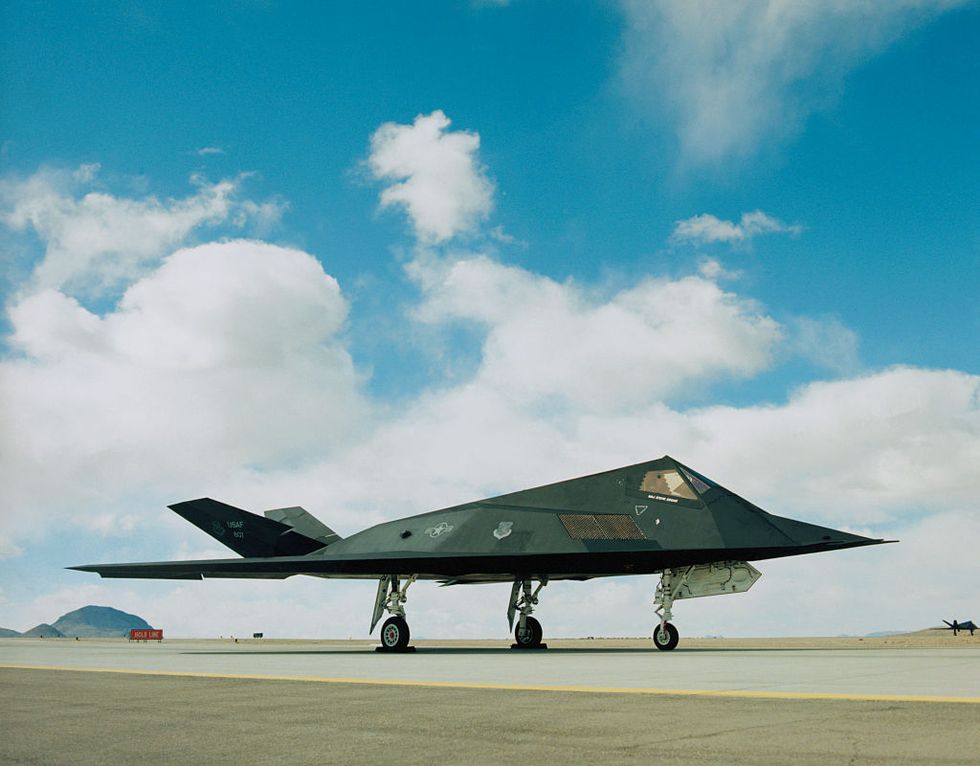- A MiG-23 fighter jet trainer was destroyed over the weekend after the pilots ejected in mid-flight.
- The fighter was the only privately-owned, flyable MiG-23 worldwide.
- The crash, which occurred during an air show, is currently under investigation.
A privately-owned former Soviet-bloc fighter jet crashed over the weekend after the pilots ejected. The MiG-23UB was performing a low-level pass over the Thunder Over Michigan air show when the pilot and copilot abruptly fired their ejection seats, their parachutes carrying them to safety. The fighter jet crashed on the ground, creating a large debris field near an apartment complex. An investigation is currently underway.
Thunder Run
The MiG-23UB was performing as part of the annual Thunder over Michigan air show in Ypsilanti, Michigan, when the incident occurred. According to the Detroit Free Press, the pilot “declared an emergency when the plane’s engine lost power.” The pilot was unable to correct the problem, and the crew made the decision to eject. The pilot suffered “serious” injuries during the ejection process, while the co-pilot suffered minor injuries.
The aircraft continued flying, unpowered and out of control, until it collided with the ground in a large fireball. The wreckage came to rest in the parking lot of an apartment complex, with photos of the wreckage appearing uncomfortably close to a building. The aircraft remains were spread over a 500-foot debris field.
Private Flogger
The MiG-23UB was owned and operated by Dan “Flies” Filer. The plane, built in 1981, was operated by the Czechoslovakian Air Force until the end of the Cold War, when it apparently passed into private hands. The plane first appeared in the United States in 2006.
Filer is a former U.S. Navy A-6 Intruder bomber pilot who flew in the 1991 Gulf War, racking up 47 combat missions. Filer acquired the plane in 2016 and restored it to flying condition. He also acquired more than a dozen other MiG-23s, donating them to aviation museums. Filer was, as of December 2020, a captain with United Airlines, flying the Airbus A320.
Here’s a video, taken by aviation photographer Dan Johnston, of Flier giving a tour of his MiG:
Until yesterday, there were five privately-owned MiG-23s in the United States, located in Florida, Texas, and Virginia. At least one is owned by a training company with a CAGE number, which is used to identify vendors working with the federal government.
The Flogger
The MiG-23 (NATO code name: Flogger) was a single-engine jet designed in the late 1960s as a frontline fighter. Unlike most jets today, which are designed to perform both air-to-air and air-to-ground missions, the MiG-23 was a dedicated fighter capable only of air-to-air combat. A similar aircraft, the MiG-27, was a dedicated ground-attack aircraft.
Like the American F-14 Tomcat and European Panavia Tornado, the MiG-23 was a swing-wing aircraft. A Flogger pilot would fly with wings forward at low speed for better handling, wings partially swept backward for air combat, and wings fully swept backward for high-speed flight. The Flogger was not a particularly good fighter jet, and in wartime would have relied on sheer numbers (5,000 were built) to overpower Western air forces.
The MiG-23 was capable of flying at up to 1,553 mph, or Mach 2. It was equipped with a 23-millimeter Gryazev-Shipunov GSh-23L autocannon, and could carry up to four R-60 short-range air-to-air missiles—the equivalent of the AIM-9B Sidewinder—and two R-35 Vympel medium-range air-to-air missiles, the equivalent of the older, obsolete AIM-7 Sparrow.
Secret Crash
This weekend’s crash was not the MiG-23’s first North American crash. In 1984, Lt. Gen. Robert M. Bond, vice commander of the Air Force Systems Command, was killed in a mysterious aircraft crash. The Air Force publicly described the aircraft as a “specially modified test craft,” but Air Force sources informed The New York Times that it was a MiG-23. It is unknown how the MiG had been acquired, but the Air Force’s designation for the jet was the YF-113.
According to the Times, the MiG-23 had been “used in tests against American planes equipped with radar-evading technology,” likely the first public reference to what the rest of the world would eventually know as F-117A Nighthawk stealth fighters. The tests apparently involved the MiG-23’s nose-mounted RP-23 Sapfir radar and whether it could detect American stealth aircraft. The F-117A was officially revealed in 1988.

Kyle Mizokami is a writer on defense and security issues and has been at Popular Mechanics since 2015. If it involves explosions or projectiles, he's generally in favor of it. Kyle’s articles have appeared at The Daily Beast, U.S. Naval Institute News, The Diplomat, Foreign Policy, Combat Aircraft Monthly, VICE News, and others. He lives in San Francisco.
















